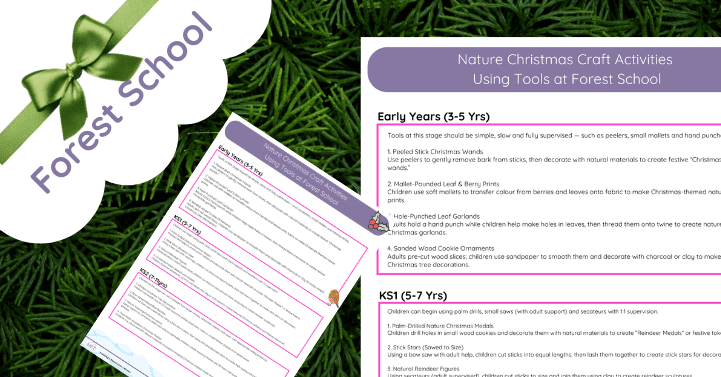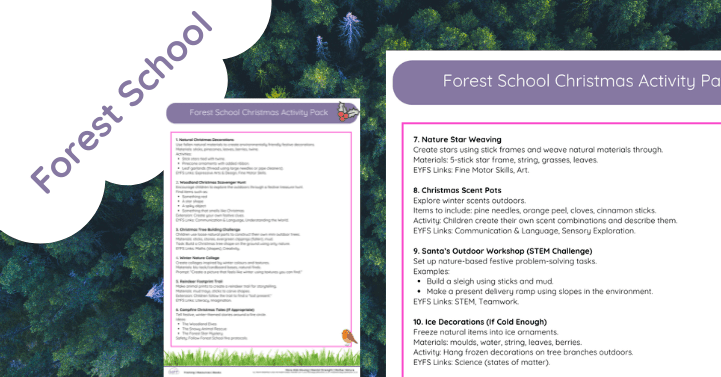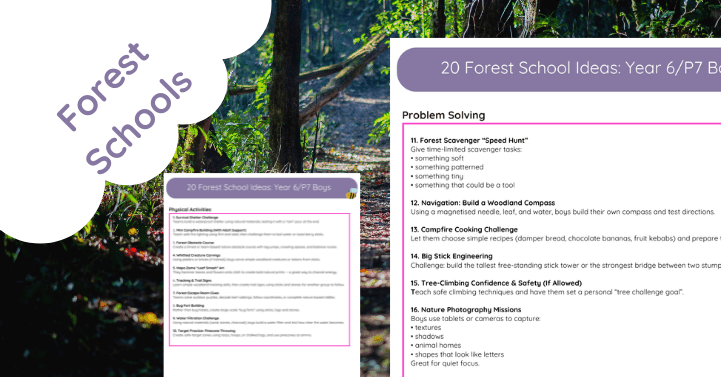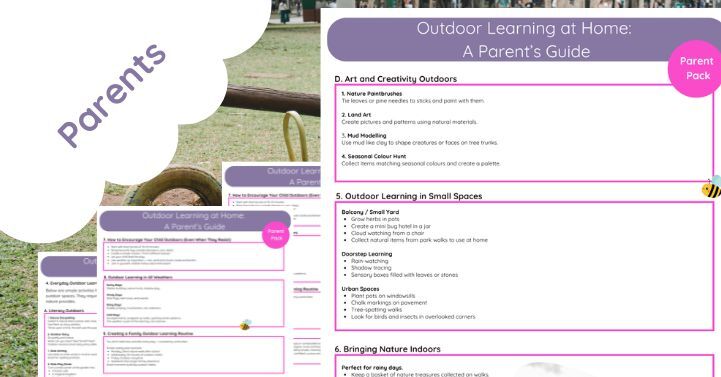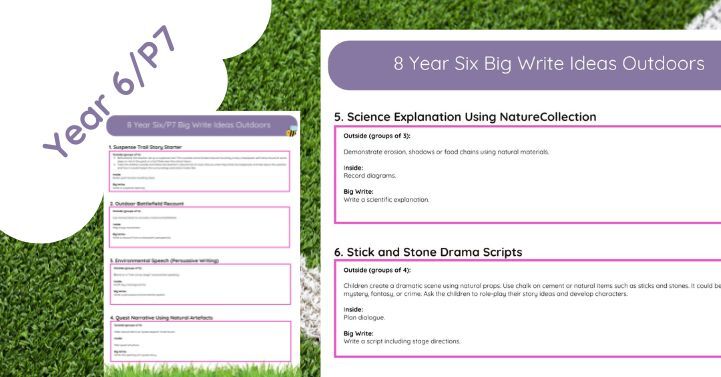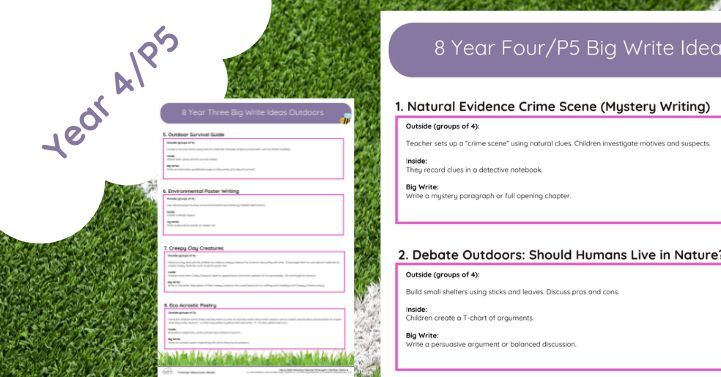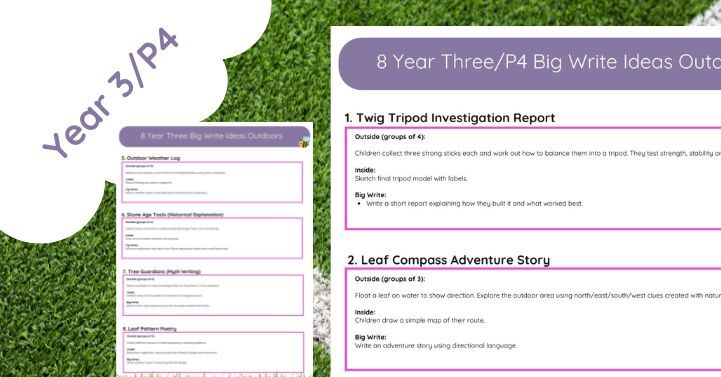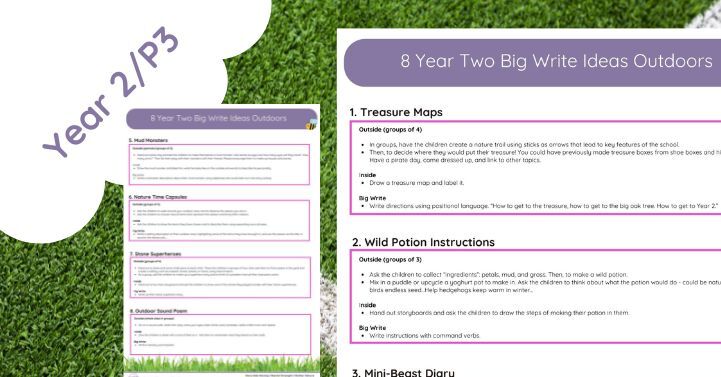Outdoor Volcano Lesson Ideas Pack (PDF)
Bring earth science to life with explosive outdoor learning!
Our Outdoor Volcano Lesson Ideas Pack is a ready-to-use, curriculum-linked resource designed to help you teach the fascinating topic of volcanoes through hands-on, outdoor experiences. Created with The Muddy Puddle Teacher approach in mind, this engaging pack uses natural, upcycled materials to make learning messy, memorable, and meaningful.
Perfect for KS1 and lower KS2, this PDF pack includes five creative lesson plans that get children moving, building, experimenting, and imagining as they explore the science and geography behind volcanoes.
✅ What’s Included:
-
5 fully-planned outdoor volcano activities
-
Step-by-step teaching guidance for each lesson
-
Materials list using natural and everyday items (mud, clay, ropes, chalk, etc.)
-
Cross-curricular links to science, geography, drama, and D&T
-
Vocabulary cards and extension ideas
🎯 Learning Outcomes:
-
Understand what volcanoes are and how they erupt
-
Explore the structure of a volcano using natural materials
-
Locate volcanoes around the world
-
Use scientific vocabulary confidently (magma, lava, crater, ash)
-
Build teamwork, communication, and creativity through outdoor play
👩🏫 Ideal For:
-
Primary teachers (KS1 and LKS2)
-
Forest school leaders and outdoor educators
-
Homeschoolers looking for hands-on science ideas
-
Thematic teaching weeks and STEM days
📥 Instant digital download – print or use on your device
🌱 Created by experienced outdoor educators
🔥 Aligned with the National Curriculum (Science & Geography)
🌋 Teaching Volcanoes in KS2: Engaging Lesson Ideas and Activities for Primary Students
Volcanoes are one of the most exciting and dynamic topics in the KS2 science curriculum. Teaching about volcanoes opens the door to fascinating discussions about the Earth’s structure, natural disasters, and the forces that shape our world. In this blog post, we will guide you through the key concepts of volcanoes and share some engaging lesson ideasthat will help make this topic both educational and fun for your KS2 students.
🌍 What Are Volcanoes?
A volcano is a rupture in the Earth’s crust through which molten lava, ash, and gases can escape from below the Earth’s surface. Volcanoes are part of the Earth’s tectonic system, and they occur where tectonic plates meet or diverge. Most volcanoes are found along the Ring of Fire, a belt of volcanoes that encircles the Pacific Ocean.
Key Facts About Volcanoes:
-
Magma is molten rock beneath the Earth’s surface.
-
Once magma reaches the surface, it’s called lava.
-
Volcanoes can be active, dormant, or extinct.
-
The shape of a volcano depends on its eruptions—shield volcanoes have gentle slopes, while stratovolcanoes are steep and explosive.
📚 Why Teach Volcanoes in KS2?
Volcanoes provide an exciting and accessible way to introduce children to the concepts of geography and science. Here’s why it’s important to teach about them in KS2:
-
Earth Science Connections: Volcanoes help students understand the Earth’s layers, plate tectonics, and the natural processes that shape our planet.
-
Real-World Application: Understanding volcanoes can make children more aware of how natural disasters affect communities worldwide, leading to discussions about safety and environmental impact.
-
Inquiry-Based Learning: Volcanoes offer opportunities for hands-on experiments and investigations, encouraging children to ask questions, make predictions, and test hypotheses.
🔬 Key Concepts to Cover in KS2 Volcano Lessons
When teaching about volcanoes, consider covering the following key ideas:
-
Structure of the Earth: Teach children about the Earth’s layers—crust, mantle, outer core, and inner core—and how they contribute to volcanic activity.
-
Types of Volcanoes: Introduce the different types of volcanoes (e.g., shield volcanoes vs. stratovolcanoes) and explain their shapes and eruption styles.
-
Volcanic Eruptions: Discuss what happens during a volcanic eruption—how magma becomes lava, how ash clouds are formed, and how the eruption impacts the environment.
-
Famous Volcanoes: Introduce well-known volcanoes like Mount Vesuvius, Mount Fuji, and Mount Etna, and discuss the impact they’ve had on human history and geology.
🎨 5 Engaging Volcano Activities for KS2
Now that you have a solid foundation of volcanic concepts, here are five exciting, hands-on activities to help bring volcanoes to life in your KS2 classroom:
1. Build a Model Volcano and Watch It Erupt!
This classic experiment allows children to create a simple model of a volcano using clay, cardboard, or other materials. Once the volcano is built, you can simulate an eruption using baking soda and vinegar or citric acid. The reaction will create a fizzy, lava-like flow.
Learning Outcome: Children will understand how eruptions occur and the difference between magma and lava.
2. Create a Volcanic Eruption in a Bottle
For a smaller-scale experiment, use a plastic bottle, some baking soda, and vinegar to simulate a volcanic eruption. Add a bit of red food coloring to make the eruption more realistic!
Learning Outcome: Children will learn about the chemical reaction between baking soda and vinegar and how it mimics the release of gases during a volcanic eruption.
3. Volcanoes Around the World – Mapping Activity
Using a world map, children can identify where famous volcanoes are located, including the Ring of Fire. This can be done through a group activity, where children place stickers or pins on the map at various locations.
Learning Outcome: This helps children understand the global distribution of volcanoes and how tectonic plates affect volcanic activity.
4. Volcanic Eruption Drama
Create a role-play activity where children act out different stages of a volcanic eruption. They can take on the roles of magma, lava, ash, and volcanic gases and work together to tell the story of a volcanic eruption.
Learning Outcome: This drama activity reinforces the concepts of the eruption process and engages children in creative storytelling.
5. Volcano Vocabulary Scavenger Hunt
Create a scavenger hunt where students search for and match vocabulary words like magma, lava, eruption, ash, and tectonic plates. Place the words and pictures around the playground or classroom for children to find and identify.
Learning Outcome: Reinforces volcanic vocabulary and strengthens understanding of key terms.
📖 Curriculum Links for Teaching Volcanoes
Teaching volcanoes ties in with several areas of the KS2 science curriculum, including:
-
Rocks and Soils: Understand the formation of volcanic rocks and how volcanoes contribute to the formation of landforms.
-
Earth and Space: Discuss how tectonic plates interact and how this leads to volcanic activity.
-
Forces and Motion: Explore the forces behind volcanic eruptions and how pressure builds up beneath the Earth’s surface.
🌱 Outdoor Learning Extension
Volcanoes are perfect for outdoor learning! Take your class outside to observe natural formations, such as mountain ranges or lava flows (using photos or maps). You can even build volcano models with natural materials like clay, rocks, and sticks
https://themuddypuddleteacher.co.uk/earth-day-design/



